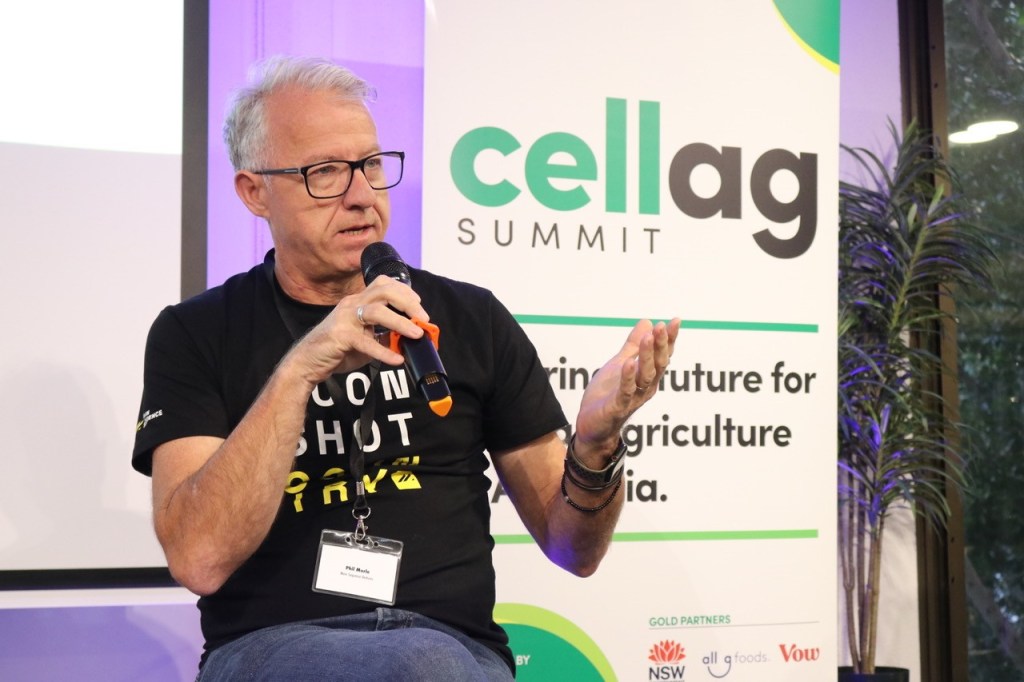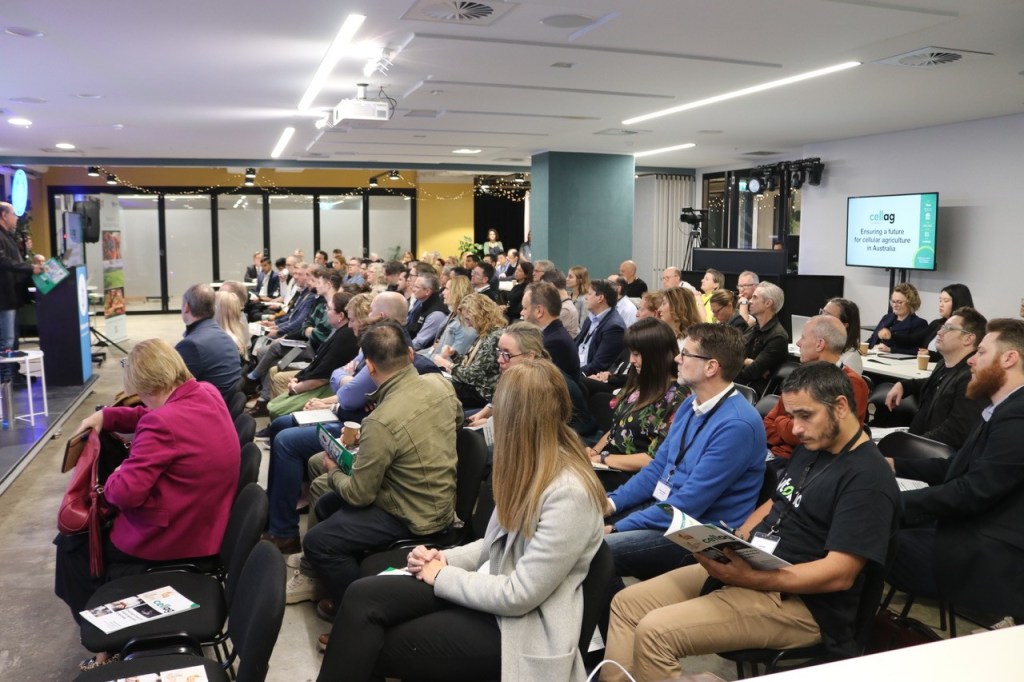Cellular Agriculture Australia (CAA), which recently co-hosted Australia’s first conference for the cellular agriculture sector, has released a report summarising the key areas the industry need to focus on in order to expedite its transition to commercialisation.
In June, CAA co-hosted the CellAg Summit with Future Alternative, helping to deliver a one-day conference that discussed the key opportunities and obstacles inherent in cell cultivation and precision fermentation.
The day saw leading cell ag companies, investors, government representatives, academia and suppliers come together, and according to an attendee survey, the inaugural event was very well received, with the more than 140 attendees giving it a rating of 4.53 out of 5. Topics of particular interest were challenges associated with scaling, how the cell ag industry fits into the broader protein landscape, and how businesses should be enhancing consumer awareness and perception. More on the survey findings here.
Off the back of the Summit, CAA generated a report highlighting and elaborating on several of the common themes discussed on the day, and which it agrees are crucial to the future of the cellular agriculture sector in Australia.
These include:

Collaboration
The sector is likely to fail unless it focuses on working together on multiple fronts with a strong and unified voice. This will involve developing a clear vision of what the sector is and how it should fit into existing food production systems, and delivering it in a way that media, consumers and the government can understand.
Accessible fundamental research is another area crying out for collaboration.
Intellectual property (IP) is obviously very important in start-up/investor
arrangements, and that this leads to the inefficient siloing of research has long
been recognised in the cellular agriculture sector. While it can be positive for
individual companies it’s not for the sector as a whole. Governments could work
with academia to help build the pre-competitive environment though developing and sharing critical, fundamental research.
Another common sentiment of the day was the need for cell ag to be seen as complementary rather than disruptive to existing food producers.

Investment
While there has been a recent decline in investment funds going into the
Australian cellular agriculture sector, this is not necessarily a reflection of
declining investor interest or confidence. In addition to the global economic
downturn, one of the main reasons cited was investors safeguarding existing
portfolios. Investors have confidence in the sector but there is now greater
realisation of the support needed to commercialise the technologies and move
through pilot scale and regulatory processes to begin generating vital returns.
Government
To kickstart vital government support and policy levers (particularly at the federal level) the sector needs to identify the government’s key motivator(s) – and then sell it with a unified voice. Sustainability, land use, climate resilience, export development, modern manufacturing and sovereign capability, could all be relevant.
Academia
A key role for academia is in fundamental research, including both blue sky
research and that which is more short-term and directly translational. If this could be undertaken in an open and public manner the issue of research duplication could be overcome. This would likely form a key component of a precompetitive ecosystem and is totally dependent on effective collaboration between industry, academia, and government, as well as investors and industry bodies.
Universities and industry need to start working together to design training programs and better intellectual property (IP) ownership models.

Consumers
At the Summit, insights were presented from a recent study of consumer awareness in key Asian markets, conducted by Food Frontier. Interestingly the study highlighted that awareness does not necessarily translate into acceptance. While Singapore rated highest in awareness of cultivated meat, it had the highest concerns around naturalness and price which potentially implies a trust shortfall. Those consumers that showed the highest acceptance identified as ‘early adopters’, ‘eco-conscious’ and ‘premium/ethical’ buyers; should the sector focus on this category first?
It was also emphasised that we urgently need more studies on awareness and perception of cellular agriculture among Australian consumers. Companies also need to focus on positive and transparent engagement right now, and to involve their customers (or target market) much more thoroughly and earlier in the product development process.
You can read the report in full here.
To stay up-to-date on the latest industry headlines, sign up to Future Alternative’s enewsletter.
Posted on:


